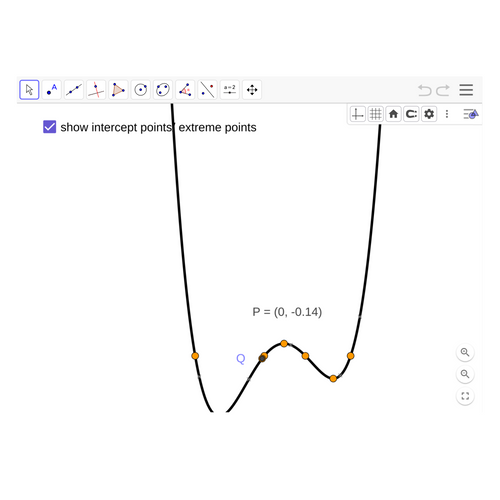
\text{Gamma and Beta functions}
\begin{aligned}
& \Gamma(z)=\lim _{n \rightarrow \infty} \frac{1 \cdot 2 \cdot 3 \cdots n}{z(z+1)(z+2) \cdots(z+n)} n^z \quad, z \neq 0,-1,-2, \ldots \\
& \text { consider }\\
&\Gamma(z+1)=\lim _{n \rightarrow \infty} \frac{1 \cdot 2 \cdot 3 \cdots n}{(z+1)(z+2)(z+3) \cdots(z+n+1)} n^{z+1}= \\
& =\lim _{n \rightarrow \infty} \frac{n z}{z+n+1} \cdot \frac{1 \cdot 2 \cdot 3 \cdots n}{z(z+1) \cdots(z+n)} n^z=z \Gamma(z) \\
&
\end{aligned}
\text{then}
\displaystyle \Gamma(1)=\lim _{n \rightarrow \infty} \frac{1 \cdot 2 \cdot 3 \cdots n}{1 \cdot 2 \cdot 3 \cdots n(n+1)} n=1
\begin{aligned}
& \Gamma(2)=1 \cdot \Gamma(1)=1 \\
& \Gamma(3)=2 \cdot \Gamma(2)=1 \cdot 2, \Gamma(4)=3 \Gamma(3)=1 \cdot 2 \cdot 3
\end{aligned}
\text{and in general }
\Gamma(n)=1 \cdot 2 \cdot 3 \cdots(n-1)=(n-1)!
\text{We will use three different methods to define the properties of the Gamma function}
1) \text{ Infinite limit (Euler)}
2)\text{ Definite integrals (Euler)}
\displaystyle \Gamma(z) \equiv \int^{\infty}_{0} e^{-t} t^{z-1} d t,\hspace{1 cm} \text{Re}(z)>0
\text {a) transform using } t=u^2, d t=2 u d u
\displaystyle \Gamma(z)=\int_0^{\infty} e^{-u^2} u^{2(z-1)} \cdot 2 u d u=2 \int^{\infty} e^{-u^2} u^{2 z-1} d u
\text{b) transform using }\displaystyle t=-\ln u, d t=-\frac{d u}{u}, t=0 \rightarrow u=1\text{ and } t=\infty \rightarrow u=0
\displaystyle \Gamma(z)=\int_1^0 e^{\ln u}\left[\ln \left(\frac{1}{u}\right)\right]^{z-1}\left(-\frac{d u}{u}\right)=\int_0^1\left[\ln \left(\frac{1}{u}\right)\right]^{z-1} d u
\text{Let us consider (a) with }z=\frac{1}{2}
\displaystyle \Gamma \Big(\frac{1}{2}\big)=2 \int_0^{\infty} e^{-u^2} d u=2 \cdot \frac{\sqrt{\pi}}{2}=\sqrt{\pi}
\text{The definite integrals and the infinite limit definitions are equivalent}
\text { Write } e^{-t} \text { as the limit } \displaystyle \lim _{n \rightarrow \infty}\left(1-\frac{t}{n}\right)^n=e^{-t}, \text{ and consider the function}
\displaystyle F(z, n)=\int_0^n\left(1-\frac{t}{n}\right)^n t^{z-1} d t, \operatorname{Re}(z)>0
\text { Taking the limit } n \rightarrow \infty \text { gives } \Gamma(z) \text { through }
\displaystyle \lim _{n \rightarrow \infty} F(z, n)=F(z, \infty)=\int_0^{\infty} e^{-t} t^{z-1} d t \equiv \Gamma(z)
\text{Substitute }u=\frac{t}{n}\text{ in }F(z, n)\text{ with }t=n u, d t=n d u, t=0 \rightarrow u=0, t=n \rightarrow u=1
\displaystyle F(z, n)=\int_0^1(1-u)^n(n u)^{z-1} \cdot n d u=n^z \int_0^1(1-u)^n u^{z-1} d u
\text { Integrate by parts: } \displaystyle \frac{F(z, n)}{n^z}=\left[(1-u)^n \frac{u^z}{z}\right]_0^1+\frac{n}{z} \int_0(1-u)^{n-1} u^z d u=
\displaystyle =\cdots=\frac{n(n-1) \cdots \cdot 1}{z(z+1) \cdots(z+n-1)} \int_0^z u^{z+n-1} d u
\displaystyle \Rightarrow F(z, n)=\frac{1 \cdot 2 \cdot 3 \cdots n}{z(z+1) \cdots(z+n-1)(z+n)} n^z \quad \text { and } \lim _{n \rightarrow \infty} F(z, n)=F(z, \infty) \equiv \Gamma(z)
\text { 3) Infinite product (Weierstrass) }
\displaystyle \frac{1}{\Gamma(z)} \equiv z e^{\gamma z} \prod_{n=1}^{\infty}\left(1+\frac{z}{n}\right) e^{-z / n}
\gamma=0.5772\dots \text{is the Euler constant}
\text { Euler's reflection formula: } \displaystyle \Gamma(z) \Gamma(1-z)=\frac{\pi}{\sin \pi z}


\text{We can apply this formula for }z=\frac{1}{2}
\displaystyle \Gamma(z) \Gamma(1-z)=\frac{\pi}{\sin \pi z} \Rightarrow \Gamma^2\Bigg(\frac{1}{2}\Bigg)=\pi\Rightarrow\Gamma\Bigg(\frac{1}{2}\Bigg)=\sqrt{\pi}
\displaystyle \Gamma(1+z) \Gamma\left(z+\frac{1}{2}\right)=2^{-2 z} \sqrt{\pi} \Gamma(2 z+1)
\text {Legendre's duplication formula:}
\text{Similarly we can establish}
\text{Poles of the Gamma function:}
\text{From the Weistrass formula, we see that the poles of the }\Gamma \text{ function are }z=-n, n=1,2,\dots
\text{Srtirling formula:}
\displaystyle n ! \sim \sqrt{2 \pi n}\left(\frac{n}{e}\right)^n
\text{The factorial of a number can be approximated for large }n\text{ using the Stirling formula}

\text{The }\Gamma \text{ function for real values of }z. z=-1,-2,\dots \text{ are poles of the function}

\text{In a Maxwellian distribution the fraction of particles with speed between } v\text{ and }v+d v \text{ is}
\displaystyle \frac{d N}{N}=4 \pi\left(\frac{m}{2 \pi k T}\right)^{3 / 2} \exp \left(-\frac{m v^2}{2 k T}\right) v^2 d v
\displaystyle \left\langle v^n\right\rangle=\left(\frac{2 k T}{m}\right)^{n / 2} \frac{\Gamma\left(\frac{n+3}{2}\right)}{\Gamma(3 / 2)}
N \text { being the total number of particles. The average or expectation value of } v^n \text { is defined }
\text { as }\displaystyle \left\langle v^n\right\rangle=N^{-1} \int v^n d N \text {. Show that }
\text{Problem:}
\text{In a Maxwellian distribution the fraction of particles with speed between } v\text{ and }v+d v \text{ is}
\displaystyle \frac{d N}{N}=4 \pi\left(\frac{m}{2 \pi k T}\right)^{3 / 2} \exp \left(-\frac{m v^2}{2 k T}\right) v^2 d v
\displaystyle \left\langle v^n\right\rangle=\left(\frac{2 k T}{m}\right)^{n / 2} \frac{\Gamma\left(\frac{n+3}{2}\right)}{\Gamma(3 / 2)}
\text { as }\displaystyle \left\langle v^n\right\rangle=N^{-1} \int v^n d N \text {. Show that }
\text{Problem:}
\begin{aligned}
d v & =\left(\frac{2 k T}{m}\right)^{\frac{1}{2}} \frac{d u}{2 u^{\frac{1}{2}}} \\
\left\langle v^n\right\rangle & =\int_0^{\infty} v^n \frac{d N}{N}=4 \pi\left(\frac{m}{2 k T}\right)^{3 / 2} \cdot \int_0^{+\infty} v^{2+n} e^{-\frac{m v^2}{2 k T}} d v \\
& =4 \pi\left(\frac{m}{ 2\pi k T}\right)^{\frac{3}{2}} \cdot\left(\frac{2 k T}{m}\right)^{\frac{n+2}{2}} \int_0^{+\infty} u^{\frac{n+2}{2}} e^{-u} \frac{d u}{2 u^{\frac{1}{2}}} \cdot\left(\frac{2 k T}{m}\right) \\
& =\frac{2}{\pi^{1 / 2}} \cdot\left(\frac{2 k T}{m}\right)^{\frac{n}{2}} \Gamma\left(\frac{n+3}{2}\right)
\end{aligned}
\displaystyle \text{let us put }u=\frac{m v^2}{2 k T} \Rightarrow v=\sqrt{\frac{2 k T}{m}} u^{\frac{1}{2}}
\displaystyle v=\left(\frac{2 k T}{m}\right)^{\frac{1}{2}} u^{\frac{1}{2}}, v^n=\left(\frac{2 k T}{m}\right)^{\frac{n}{2}} \cdot u^{\frac{n}{2}}
\displaystyle \Gamma\Big(\frac{3}{2}\Big)=\frac{\sqrt{\pi}}{2}
\text{Beta function}
\begin{array}{ll}
B(x, y)=\displaystyle \int_0^1 t^{x-1}(1-t)^{y-1} d t & \text { for } x, y>0 \\
B(x, y)=2 \displaystyle \int_0^{\pi / 2}(\sin \theta)^{2 x-1}(\cos \theta)^{2 y-1} d \theta \quad\left(\text { Put } t=\sin ^2 \theta\right) \\
B(x, y)=\displaystyle \int_0^{\infty} \frac{u^{x+1}}{(1+u)^{x+y}} d u \quad\left(\text { put } t=\frac{1}{1+u}\right)
\end{array}
\text{The Beta function can be defined as follows:}
\text{Show that:}
B(m, n)=B(n, m)
\displaystyle B(m, n)=\int_0^1 x^{m-1}(1-x)^{n-1} d x , m, n>0
t=1-x \Rightarrow d t=-d x
x \rightarrow 0, t \rightarrow 1 \text{ and } x \rightarrow 1, t \rightarrow 0
\text{Solution:}
\displaystyle B(m, n)=-\int_1^0 x^{m-1}(1-x)^{n-1} d x , m, n>0
\begin{aligned}
B(m, n) & =-\int_1^0(1-t)^{m-1} t^{n-1} d t \\
& =\int_0^1(1-t)^{m-1} t^{n-1} d t \\
& =\int_0^1 t^{n-1}(1-t)^{m-1} d t \\
& =B(n, m)
\end{aligned}
\text{Show that:}
\displaystyle B(m, n)=2 \int_0^{\pi / 2} \sin ^{2 m-1}(\theta) \cos ^{2 n-1}(\theta) d \theta=2 \int_0^{\pi / 2} \cos ^{2 m-1}(\theta) \sin ^{2 n-1}(\theta) d \theta
deck
By smstry
deck
- 138



